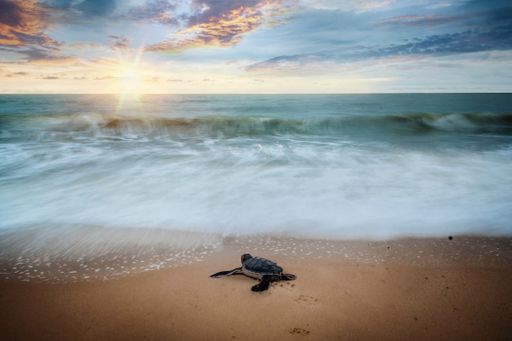Pumped up: will a Dutch startup’s plan to restore Arctic sea-ice work?
As the Arctic warms, devastating the climate and ecosystems, an old idea used to create skating rinks could be deployed to restore melting ice caps, despite scepticism from some experts

Dutch Startup's Plan to Restore Arctic Sea-Ice
A Dutch startup called Arctic Reflections wants to use a technique commonly used to create skating rinks in the Netherlands to help solve the problem of melting Arctic ice. The startup proposes pumping water on top of the ice to maintain its thickness and reflect the sun's rays back to the atmosphere.
The idea is inspired by the IJsmeester, who creates ice-skating rinks in the Netherlands by flooding a field with water and adding thin layers of ice on top. The startup believes that a similar method could be used to restore melting ice caps in the Arctic.
With Arctic ice shrinking by almost 13% a decade and ice-free summers predicted by 2050, Arctic Reflections is looking for innovative solutions to preserve the ice sheet until CO2 levels decrease and the ice becomes regenerative.
The Technique and Field Tests
Arctic Reflections is not the only company exploring this technique. Other companies have used similar methods for different purposes, such as creating ice roads and for oil exploration in the Arctic.
Arctic Reflections has joined forces with Real Ice, a Bangor University spinoff, to conduct field tests in Iqaluktuuttiaq, Canada. They have used a hydrogen fuel-cell-powered water pump to refreeze the top layer of the ice, adding 10-20cm of thickness. The plan is to develop an underwater drone that can detect ice thickness, pump water as necessary, and move on to the next spot.
The project's goal is to engage with the local community and restore sea ice, which is vital for wildlife and Indigenous people who rely on Arctic ecosystems for survival. By restoring the ice and increasing its albedo, Arctic Reflections hopes to save a significant area of ice from melting in the summer.
Challenges and Controversies
While the technique shows promise, there are still unanswered questions and challenges. Experts are unsure how thinner ice will react to flooding and whether thicker ice will last. Some scientists believe that the only real solution to the climate crisis is to reduce carbon emissions.
Despite the controversy, the Dutch startup believes that taking action, even with unconventional methods, is necessary to buy some time. The technique is cost-effective compared to alternative solutions and could help preserve the Arctic ice until more permanent measures are implemented.
Although it may not be a long-term solution, restoring Arctic sea ice through pumping water could provide temporary relief and protect the Arctic ecosystem and its inhabitants.

